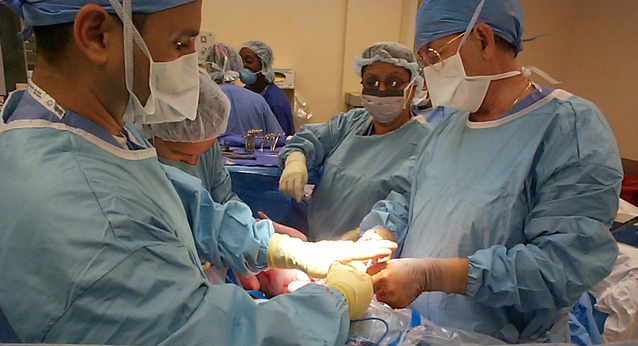 Antibiotics are commonly thought of as a therapeutic treatment. Patients develop strep throat; they get treated with antibiotics. The same goes for pneumonia or a wound infection. But antibiotics can also be used as prophylaxis.
Antibiotics are commonly thought of as a therapeutic treatment. Patients develop strep throat; they get treated with antibiotics. The same goes for pneumonia or a wound infection. But antibiotics can also be used as prophylaxis.
Often patients are put on an antibiotic regimen, before, during or right after a surgical procedure to reduce the chances of an infection at the surgical site.
In the days before antibiotics, these nosocomial infections were a big fear, but these miracle drugs have since made surgery much safer. Unfortunately, the current state of antibiotic efficacy, and the rising fear of resistance, is a threatening to bring back those significant concerns.
The CDC estimates that over 23,000 Americans die each year from antibiotic resistance bacteria. However, the toll of this crisis on prophylactic use had not been previously investigated until now.
Researchers working for the Center for Disease Dynamics, Economics & Policy in Washington, D.C. preformed a meta-analysis on data from the 10 most common procedures in which prophylactic antibiotics are given. The data, which included procedures from 1968 to 2011, were published in The Lancet Infectious Disease.
Overall, the researchers reported that between 38.7 percent and 50.9 percent of bacteria causing surgical site infections, and 26.8 percent of chemotherapy infections, are resistant to the standard prophylactic antibiotic. They also found that 39 percent of bacteria that caused infections after a cesarean section were resistant to the recommended antibiotic prophylactic regimens; for transrectal prostate biopsy the estimate was between 50 and 90 percent.
These numbers are staggering, but the researchers also believe they will most likely increase because of antibiotic resistance is a growing problem. More and more infections from "superbugs" arise each year. This idea led them to model what would happen if there were additional decreases in the efficacy of antibiotics. The results of this were predictably devastating.
A 10 percent reduction in antibiotic efficacy would lead to an additional 40,000 infections from these procedures each year in the U.S. A 30 percent reduction would lead to 120,000 infections and over 6,000 additional fatalities. For 70 percent, the infection total would be a whopping 280,000.
To be clear, based on the methods of attainment, some of the numbers in this study should be questioned. Meta-analyses often cut out data points arbitrarily (i.e. only taking data from 10 procedures). Models are also generally based on estimates made by researchers. Furthermore, it's tough to say if the 10, 30 and 70 percent reductions are plausible or realistic in the near future. It also does not take into account the introduction of new antibiotics.
However, the shortcomings of the study aside, the overall message is an important one: antibiotic resistance is taking a negative toll on the safety of surgical procedures and chemotherapies.
This is not to say that patients should avoid surgeries or other procedures that involve prophylactic antibiotics. Many of the procedures examined in this study, like cesareans and chemotherapy, are life saving. The results of this study should not deter patients or doctors from them. However, many of these procedures are electives, such as hip replacements, while others may have medical alternatives that patients could opt for instead of surgery.
All surgeries have inherent risks, but the extent to which the ineffectiveness of prophylaxis play in that risk has been previously underestimated, or simply not discussed. This study, despite some of its shortcomings, shines a light on this problem.


